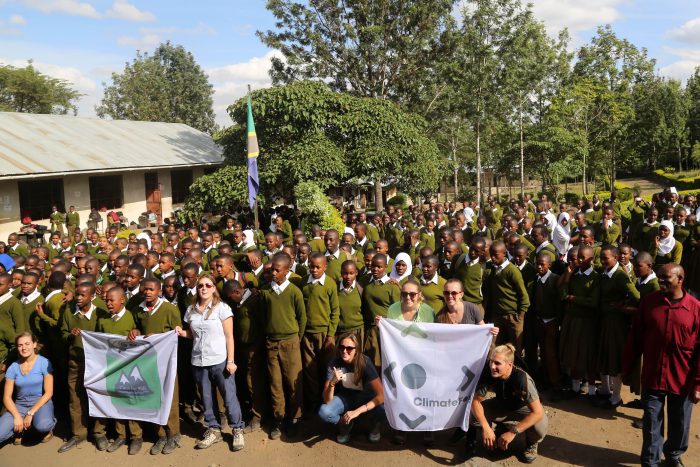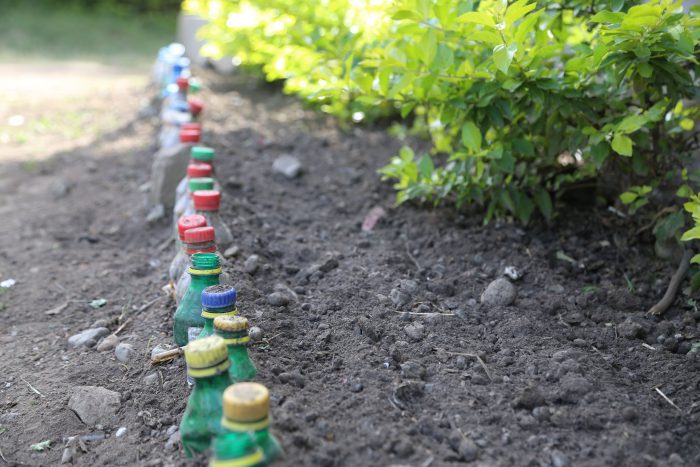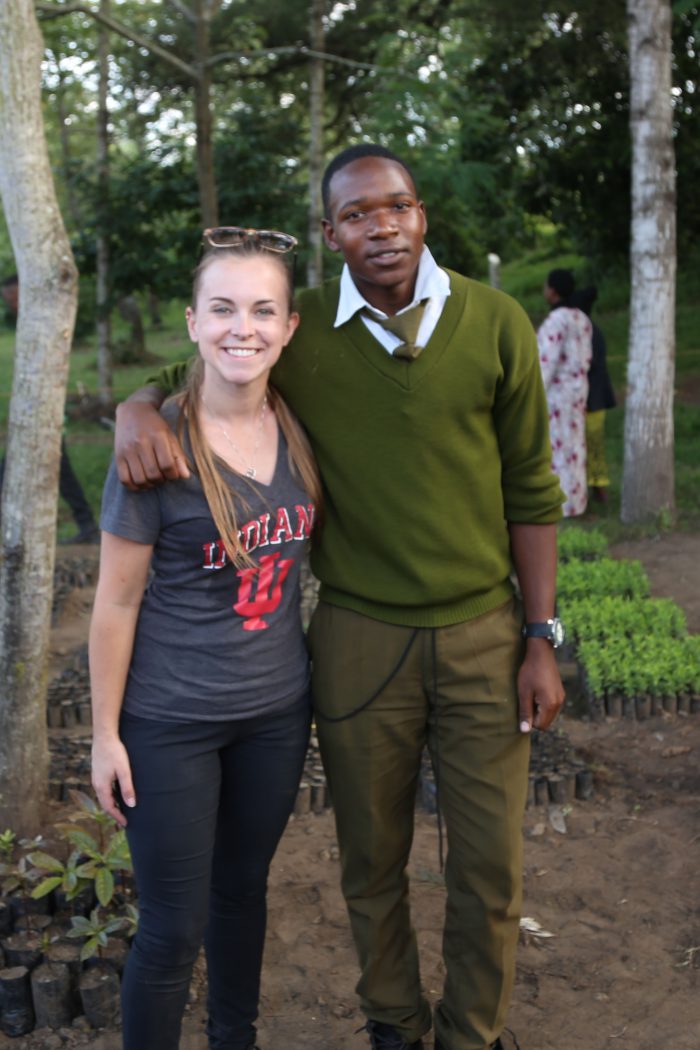Somewhere amongst the ice and wildlife in Antarctica, Christina Zerfas and Erasto Njavike Mc Kunyopa planned the trip of a lifetime to Tanzania. Erasto had been telling Christina about his work with Jane Goodall’s Roots & Shoots in Tanzania and began explaining how he wanted to lead a trip where trees would be planted at the base of Mount Kilimanjaro. In his plan, the group would then summit the mountain and collect trash on the way down.
And, so the Cans for Kili initiative was brought to life.
Christina, an IU Alumna from Indianapolis, wanted to make this great opportunity environmentally friendly to both Tanzania and Indianapolis. Christina explained how Indianapolis was the third worst city in the United States for reusing waste. She began reaching out to friends, and built a team. The Cans for Kili team planned to fund the trip to Tanzania to summit Mount Kilimanjaro by recycling aluminum cans–more than 100,000 of them.
Christina Zerfas had three goals for Cans for Kili initiative.
The team used the Nextdoor app to connect with their community members to organize pick-ups of cans weekly and at large events like the Indianapolis 500.
After months of hard work, Cans for Kili collected over 130,000 cans to fundraise for their trip to Tanzania. They asked me to join the team and document their journey through videotape.
The trip began on the 26th of August, some of the team arriving through Kilimanjaro airport and others flying to Nairobi, Kenya and driving to Moshi, Tanzania where were based for a couple of days prior to the climb.
After a drive along some paved highways, we came to a dirt road which ran parallel to a coffee farm. We stayed in a nearby lodge for a couple of days prior to our climb. That evening, the team came together and had a call with Erasto. He explained the plan. We would visit a local school in Moshi on the 27th and each introduce ourselves and speak briefly about why we were there. Christina would include details of an environmental trip she took to Antarctica and what she learned there.
The next day, we met our tour guides and had a briefing of our climb prior to leaving to visit the school. When we arrived at the school, we were greeted by the environmental teacher and the Headmistress. We signed the visitor’s book, and took a tour of the classrooms, grounds, play areas and gardens. We were told about their environmental efforts such as using ash on their crops as an organic pesticide. We then learned our task for the day, to help plant seeds and build a fence around them to keep elephants from trampling their crops.
Once the students completed their exams, we made the introductions. Christina had a captivating presentation for the schoolchildren. She had brought her Antarctica gear to Tanzania and, as the students looked on, added layer after layer of clothing to explain to the students how cold it is on the South Pole. By the end of her presentation she had removed layers and explained it was no longer always that cold in Antarctica and if it continues getting warmer the penguins will die. She thanked the students for the environmental work they were doing at their school and explained how it will help.
Zerfas’ presentation to the school.
Following the presentation, we began working with students to plant seeds and build the fences. We spilt into groups to focus on certain tasks. Some planted seeds, others carried the concrete fence posts, brought water and dug holes. The rest helped make concrete and ensure the fence was straight. This experience was such a beautiful opportunity to connect with students and help them understand the importance of their work. I even had one student that was fascinated in filming and photography, so I lent him my camera to take some photographs of his classmates. Below is a photo of us after we finished the project.
That evening, we were invited to a dinner. Shortly after we took our seats at the table, we were asked to lower our heads and close our eyes. We had no idea what was about to happen. When we opened our eyes, to our astonishment, famed primatologist and anthropologist Jane Goodall was at our table. In fact she sitting only one seat away from me. Goodall is known world-wide among environmentalists and is considered the world’s foremost expert on chimpanzees. The group broke into applause and smiles.
Jane Goodall speaking to the Cans for Kili team.
Jane began telling us her story and why she founded Roots & Shoots. She said that when she was 10 years old, she began reading “Tarzan of the Apes” cover to cover and decided then that she was going to go to Africa and live with the wild animals and write books about them. Jane admitted she fell in love with Tarzan reading the books, and joked that Tarzan married the wrong Jane. She thanked us for our work and continued to explain that she never thought that she would have ended up with such notoriety, however the position has given her the opportunity to help many communities and people.
Jane’s love and passion for the world was contagious. We listened intently as she told us it was only her mother that believed in her and told her if she really wanted this, she was going to have to work hard and take advantage of every opportunity–to never give up. This was the message that Jane has taken around the world, particularly to young disadvantaged people. To me, there seemed to be a connection between her message of hope and the school we visited that day. Many of the girls had told us they wanted to grow up to be be neuroscientists, doctors and lawyers. We left that evening filled with so passion, warmth, and a deep sense of gratitude.
Megan Alascio discusses her experience helping Roots & Shoots and meeting Jane.
On the 28th we began our climb. The hike went on for over 7 days and was as full of inspiration and happiness as hard work. Our team sang and danced our way up the mountain. It was amazing to see all the five climate zones as we made our way higher up the mountain. The five zones are the cultivation, Forest, Heather-Moorland, Alpine Desert and the summit. Over the trip we hiked for miles and on the last day –after 13 straight hours of climbing– we summited. It was night by then, a plan by design since overnight weather is more predictable. The summit was the true challenge of the trip. As oxygen begins to get low, altitude sickness began to hit people in a variety of ways. Some became dizzy or lightheaded, some nauseous, and others were left with migraines.
On day 5, we reached 19,341 feet at the Uhuru Peak summit. We quickly took some photos and hurried back down the mountain to get to a safer altitude. The trip was a success with a 100% summit rate reached by the Cans for Kili team, and on the way down the team collected what little trash was left on the mountain. It was a journey of endurance and hope–the trip of a lifetime.






